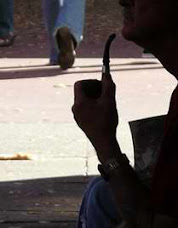It’s that time of year. You blow back and forth with the extremes: now the warm, sunny days teasing of spring, and then you get whipped back into the dark, blustery cold and wet of winter once again. Daffodils in full bloom while fresh snow sits beneath the hilltop firs. The battle of the seasons, if you will. New life pushing through the decay.
I tried to use this positive outlook as I viewed the putrid, rotting carcass of the beached fin whale on the Mendocino Coast near Westport – or what’s left of its carcass. To be honest, it didn’t really stink unless you stood downwind. But, thank goodness for a strong stomach.
My focus was not how ghoulish the scene was, but to capture the finality and reality of the huge mammal’s end. Of course, the cameras have been clicking for weeks – with a few making it to various online pages. One writer/traveler from Texas happened by early and has some good pictures of the whale shortly after landing onshore posted at henrymelton.blogspot.com/2007/02. My own shots are on this blog site.
When local photographer Suzette Cook-Mankins and I arrived, the decaying fin whale had obviously made a few tosses back out to sea on high tide, washing up more stripped and pitiful each time. With sodden loosely-woven strips of muscle and sagging torso, the graying mass was difficult for our cameras to distinguish from the curves of sand and foam at water’s edge.
There was some initial controversy reported in area news accounts of whether the whale’s body should be left to rot – or not. I had fancied some alternate resolutions, like using its blubber as an oil resource via early Native American tradition. One could design whale-skin slickers for spring or bring back the whale-bone corsets to pinch in our winter fat. Or maybe not.
It does seem right to allow its natural breakdown giving local birds and small animal life a feast of sorts. The trouble is with us, the other large mammals in the area; whatever happened to live and let live – or better, die and let die? Though it is technically an endangered species, we had no control of its passing and could have done nothing to revive it.
Apparently, the poor beast’s breakdown was aided by some roughing up courtesy of the human element. It must be some type of primitive – or just backwoods mindset to wreak havoc upon the felled giant. Man conquers the beast – not its actual destroyer; he just wants to pound his chest and stamp his boots as victor. Neanderthals.
Pickups have zoomed over the sand, with one reported stuck up on its fin until a second truck finally pulled it off as high tide threatened to submerge them all. Would’ve served them right.
Many of us have chosen to be onlookers. We ogle and gawk at such a chunk of Mother Nature. Normally relegated to a glimpse through binoculars or from a ship’s stern, we rarely can come this close. Moby Dick it was not, but this is as good as it gets. Even if it’s not a sperm, blue or humpbacked version – we’ll take it.
When we stopped to ask directions at the local store, the clerk looked bored and pointed to hand-printed travel directions pasted to the sales counter. Sensing her reluctance to chat it up, I read and exited with a shallow thank you. We were only another car of whale-viewers now become tiresome, I’m sure.
The crowds had thinned to only half a dozen as we hiked a fair distance to arrive whale-side. We climbed over and onto big jagged rocks for a better shot, a different angle. Cursing as the tide came in, our opportunity fading with the afternoon, we watched as the huge threads of gristle and skin puffed up with the flow of salt water. Hard to find its fin – this fin whale had already lost its namesake…we could barely make out the long toothless upper jaw hovering over the brown sand.
By next week or next month, it will have become a part of the tight, crawling crabs; gulls will have grown fat feeding on it. Plant life will have been given a big boost of nutrients and fertilizers. Spring will be that much more lively and fruitful because of this rare wash-up.
Our human stories, as well as nature tales, often contain the sad demise of one entity that, in turn, gives life and vibrancy to those who survive. This is just one example of nature’s accidental bounty.
Sunday, March 4, 2007
Subscribe to:
Post Comments (Atom)




























2 comments:
You and your partner (?) are certainly adventurers. And you've immortalized this magnificent creature. Nice photos!
Post a Comment